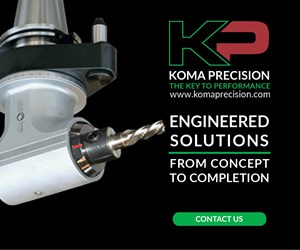CAM Offers Dynamic Milling Techniques, Supports Multi-Axis Machining
The X5 version of the company’s CAD/CAM software introduces significant new capabilities, including new dynamic milling techniques, multi-axis machining, Smart Hybrid Finishing and more.
Share









Autodesk, Inc.
Featured Content
View More
Related Content
-
Generating a Digital Twin in the CNC
New control technology captures critical data about a machining process and uses it to create a 3D graphical representation of the finished workpiece. This new type of digital twin helps relate machining results to machine performance, leading to better decisions on the shop floor.
-
Tips for Designing CNC Programs That Help Operators
The way a G-code program is formatted directly affects the productivity of the CNC people who use them. Design CNC programs that make CNC setup people and operators’ jobs easier.
-
6 Machine Shop Essentials to Stay Competitive
If you want to streamline production and be competitive in the industry, you will need far more than a standard three-axis CNC mill or two-axis CNC lathe and a few measuring tools.

































